It is very interesting to know that some spiders eat other spiders, the same as some lizards eat other lizards.
Some will eat spiders of the same species, some males eat the females and some females eat the males. Siblings are known to eat each other and spiderlings are known to feed off their mothers.
Then some eat spiders of another species.
This article will provide you with information on spiders that eat other spiders.
Table of Contents
Why Some Spiders Eat Other Spiders
When it comes to prey, spiders choose insects or spiders that are smaller than themselves. It is this simple.
If the males are a fraction of the size of the female, she will readily eat him if she is hungry. Smaller spiders of any species are prey for a larger spider.
Most mothers will do anything for their children and some spiders make the ultimate sacrifice, allowing hundreds of her spiderlings to dissolve her from the inside out and then eat the body for survival and nutrition. Some sacrifice themselves as prey, helping them to become natural hunters, helping them survive, this is known as matriphagy or mother eating.
16 Common Spiders That Eat Other Spiders
There are sixteen spiders known to eat other spiders, these include:
1. Assassin Spiders

Assassin spiders (family Archaeidae) are sometimes referred to as pelican spiders and are a very rare group of spiders that are known for eating other spiders.
They look alien, but their modification is designed to catch and kill other spiders.
They were believed to be extinct years ago but were found later in Madagascar, South Africa, and Australia.
Their features are not found in other spider species. They have long specialized mouth parts, long necks, and two well-developed eyes. Their mouth parts (Chelicerae) are long spikes, which help keep prey in place. They have two well-developed eyes that face forward and six poorly developed eyes.
2. Black Widow Spiders
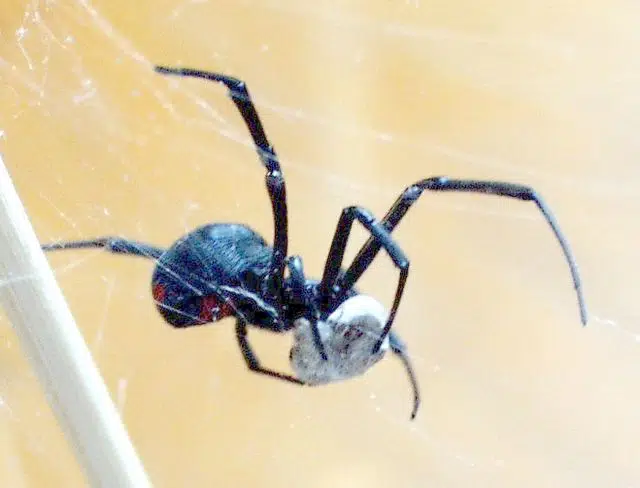
Black widow spiders will eat other spiders that get entangled in her web.
The female sits upside down in her web, waiting for insects and prey to get entangled. If the entangled spider is smaller than she is, she will capture it and eat it.
The female black widow is also known to eat the male after mating, known as sexual cannibalism, which inspired the “widow” name.
The males tend to choose their mates based on whether the female has already eaten, avoiding the risk of being her next meal. The male senses the chemicals inside the web to help him determine if she has eaten or not.
In addition to sexual cannibalism, black widow spiders are known for their sibling cannibalism as well.
3. Redback Spider
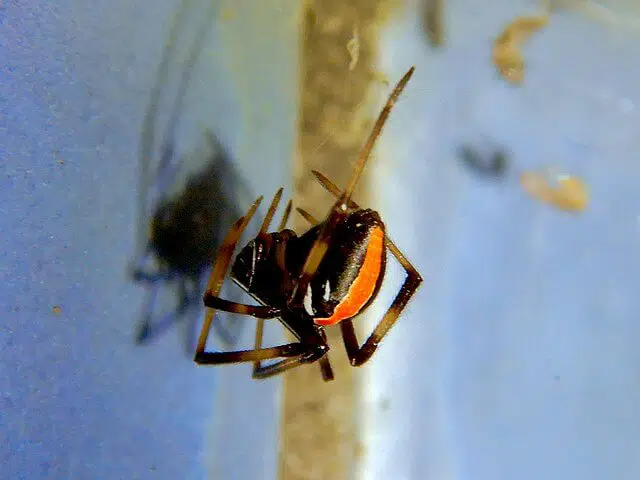
It’s not uncommon for larger female redback spiders (Latrodectus hasselti) to steal stored food from other spider webs.
When they come face to face with the spider of the same species, either male or female, they tend to fight to the death with the defeated spider being eaten.
Males that are accepted by a female are allowed to feed on prey that is ensnared in her web.
In addition to this, the spiderlings try and steal food from their mothers, which she prevents, often killing the opportunistic spiderlings. The spiderlings are cannibalistic and those that are more active eat their siblings which are not as active.
Redback spider males assist females in sexual cannibalism. The male, which is smaller than the female, jumps with his abdomen over the female’s mouth. In most cases, females will fully consume the male while still mating. Any males which are not eaten will die soon after mating due to their injuries.
Males sacrificing themselves during mating offers the advantage of a longer copulation period, which results in more eggs being fertilized, along with once a female has eaten a male, she is more likely to reject any other males.
4. Allocosa brasiliensis
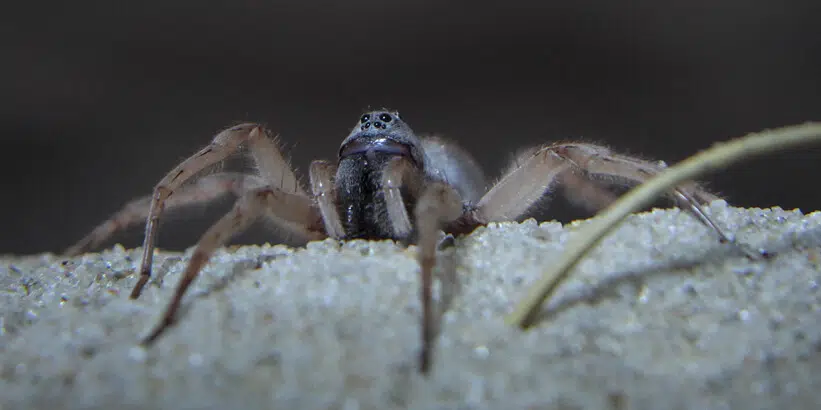
This burrowing wolf spider male uses pheromones to attract females, rather than most other spiders where females attract the males.
The males are known to eat the older females coming into their burrow, choosing a virgin female. The reason for this is believed that the first egg sac the female has contained more eggs than the egg sac in older females, providing an evolutionary advantage.
They are from southern South America and remain unstudied, but are known for their unusual sexual behavior. The males have been known for more than a century, while the females were first described in 1980.
5. Daddy Long-legs Spider
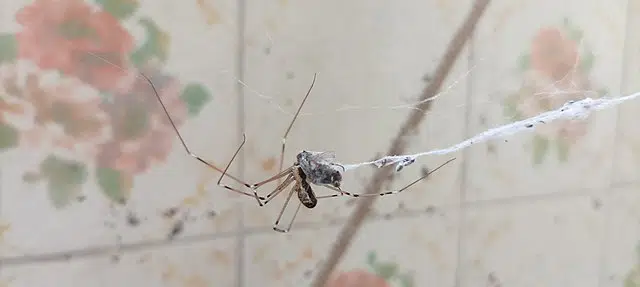
Daddy longlegs spiders (Pholcus phalangioides), also known as cellar spiders, eat insects and other spiders.
They are known to invade other spiders webs, eating the other spider, their eggs, and their prey. They sometimes vibrate the other spider’s web, making the spider believe they are trapped prey, luring the spider towards them.
They are known to attack and eat redback spiders, huntsman spiders, Tegenaria funnel weave spiders, and common house spiders. They are beneficial spiders to have in your home if you live in areas with hobo spiders, helping to keep populations in check.
Their webs are not sticky and they rely on an irregular structure to capture prey. When they detect prey, they quickly cover the prey in silk, inflicting a fatal bite.
Daddy longlegs spiders vibrate their webs rapidly when they feel threatened, which is believed to make the spider harder to see, while also increasing the chance of capturing insects that are close to the web.
6. Vampire Spider
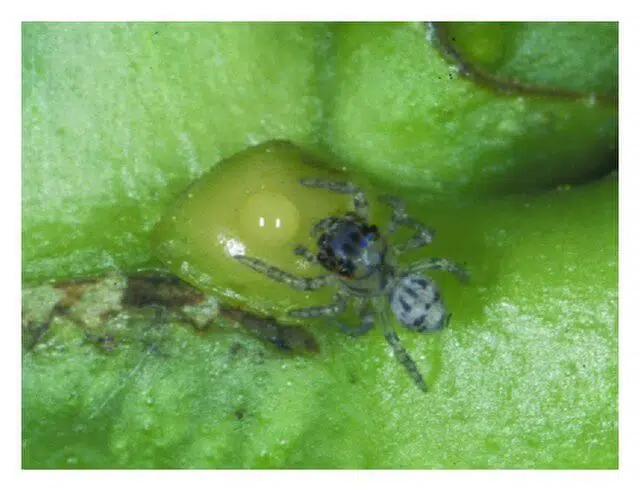
The vampire spider (Evarcha culicivora) has a different mating behavior to other jumping spiders.
They are very violent with cannibalism of both sexes being more common than in any other spider species. Though males tend to kill females more than females killing the males. This is to ensure reproductive success.
The vampire spider has evolved with males making the mating choice. Large males are more likely to eat the female, which is why her body size is an indication of her survival chance.
It is imperative for some females to survive for successful spiderlings and the female’s safety after mating. Females and males considered virgins are more likely to take risks, choosing individuals with larger body sizes. Those that have previously mated are safer partners for those of smaller body sizes.
7. Marbled Cellar Spider
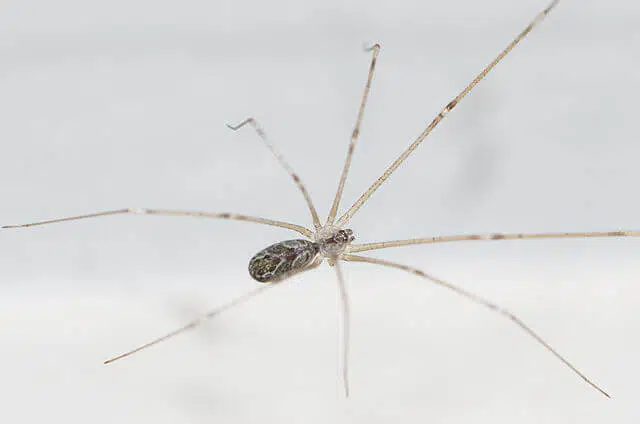
Marbled cellar spiders (Holocnemus pluchei) eat a varied diet including insects and venomous spiders.
Even though they build non-sticky webs, they can navigate a sticky web with precision. They use their long spindly legs to carefully make their way across the sticky web, reducing the risk of getting aught or they create their web over to the sticky web, creating their path. Then the marbled cellar spider vibrates on its pathway, attracting the host spider, luring it closer so it can attack and eat it.
Females are responsible for caring for the eggs and spiderlings, but males lead the courtship and mating. He is cautious when approaching a female, and if he doesn’t get it right quickly, she drives him from her web. Sometimes he will try and again. Females are known to sometimes eat the male if he doesn’t meet her expectations, though this behavior is rare.
8. Common House Spider
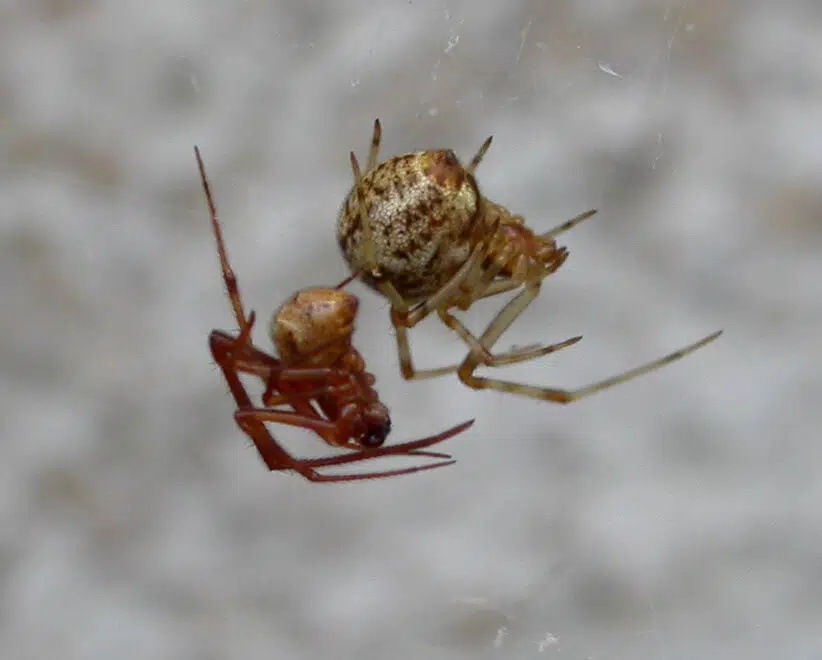
Common house spiders (Parasteatoda tepidariorum) create tangled and messy webs in the corner of a room, between stones, fences, and even under furniture. They choose a habitat with an abundance of prey.
They rely on their sticky web to capture their prey. Once prey is entangled, the spider throws more silk over the victim and pulls them closer.
The common house spider is known to change their web location if they are not catching enough prey.
They will fight when they encounter other spiders, whether a member of its species or another species, usually with one spider being fatally wounded and eaten.
They have terrible eyesight, relying on the vibrations in their webs to tell them when prey is entangled, which can include other spiders.
9. Portia Jumping Spider
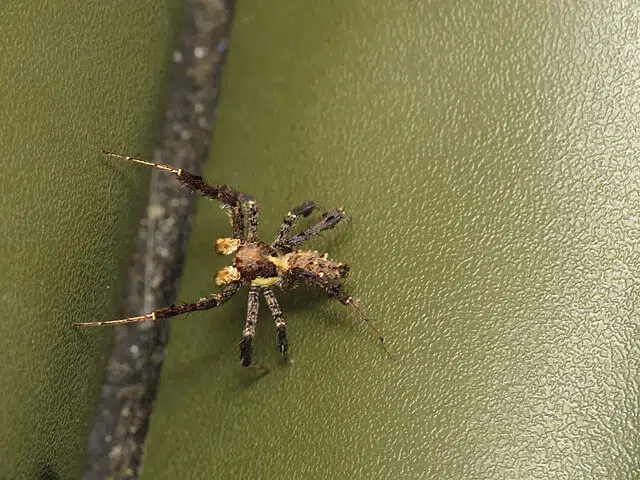
Portia jumping spiders (genus Portia) are intelligent hunters feeding on other spiders. They tend to prefer web-building spiders that are up to two hundred times their size.
Portia jumping spider looks like a leaf caught in the web, fooling the web-building spider, which usually has terrible eyesight. This jumping spider tries a number of vibration patterns, mimicking a trapped insect or the courtship sign of a male spider, getting the web builder to move closer.
They usually hunt when there is a light breeze that blurs the vibrations.
They have a very unique mating behavior that has them mating in mid-air. Mating can take place off or on the web, but the females are also known to eat the male after mating.
The female will twist and lung at the male that has mounted her. If the male is killed prior to copulation, then the sperm is removed and the male is eaten. If he finishes mating before his death, the sperm is kept to fertilize her eggs and he is then eaten.
The majority of male Portia jumping spiders are killed during sexual encounters.
10. White-tailed spider
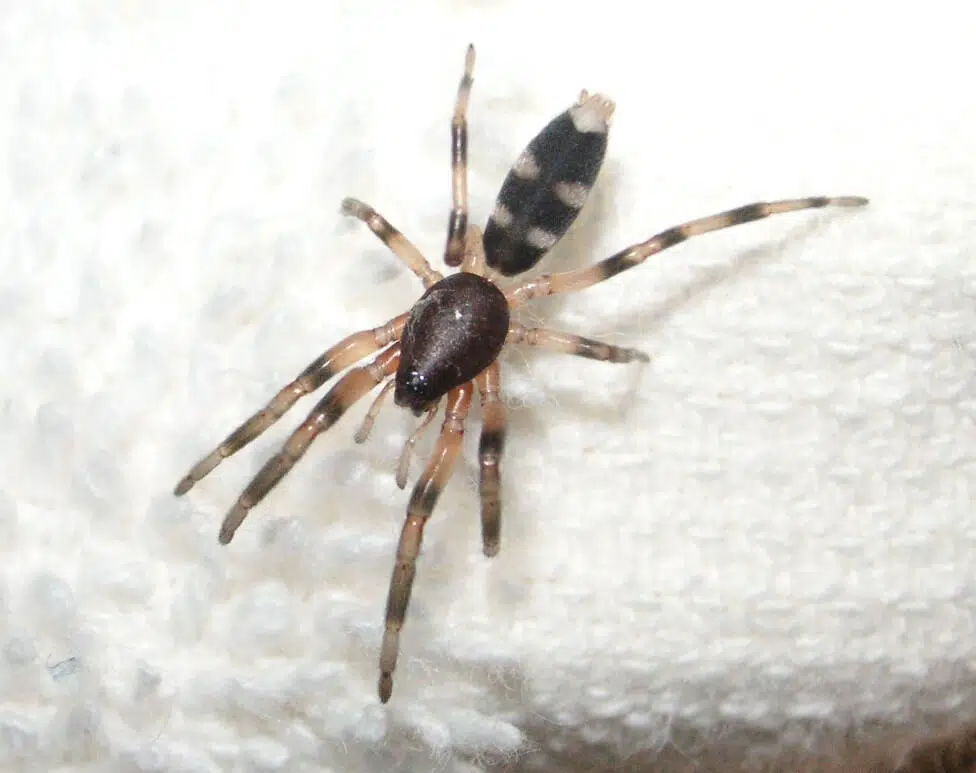
White-tailed spiders (family Lamponidae) belong to the Lamponidae family with females growing to 16mm and males to 12mm in body length. They live in the crevices of homes and in outdoor buildings, such as barns and sheds.
Their diet comprises of other spiders with the black house spider being the majority of their diet.
They do not spin webs to capture prey but are wandering hunters that seldom stay in the same place night after night. They roam around eating insects and other spiders, which includes daddy long legs, redback spiders, curtain web spiders, and black house spiders.
They live in homes, under bark and rocks, and in gardens. They are nocturnal and closely related to the brown house spider, which is native to Australia, and have been introduced to New Zealand.
11. Desert Spider
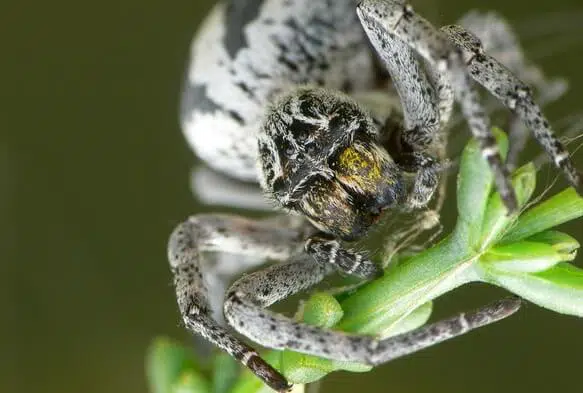
Desert spiders (Stegodyphus lineatus) can be found in the southern Mediterranean regions of Europe from Barcelona to Greece and Tajikistan.
Females spin webs to protect their eggs, which are wrapped in a cocoon and released when they are ready to hatch. Females work at night, fixing and constructing their webs.
Males and females use webs to capture prey, but males will leave their webs in search of a suitable mate.
The males are known to kill the offspring of already mated females. The females can lay more than one clutch. Males killing the egg sacs of the females already fertilized by another may increase the male’s fitness.
Female fitness is reduced with the loss of her young and less likely to survive before her net batch hatches. Females that have already mated are more aggressive to protect their young, which means the males can sustain some serious injuries. Fertilized females are known to kill and eat any male intruders.
Desert spiders exhibit matriphagy, which is a reproduction method that increases the female’s digestive enzymes.
She eats more prey and stocks up on nutrients, while the digestive enzymes digest inside her. Once her spiderlings are born, she regurgitates these enzymes for around two weeks or until she dies. The spiderlings digest ninety-five percent of the mother’s mass.
12. Peacock Spider
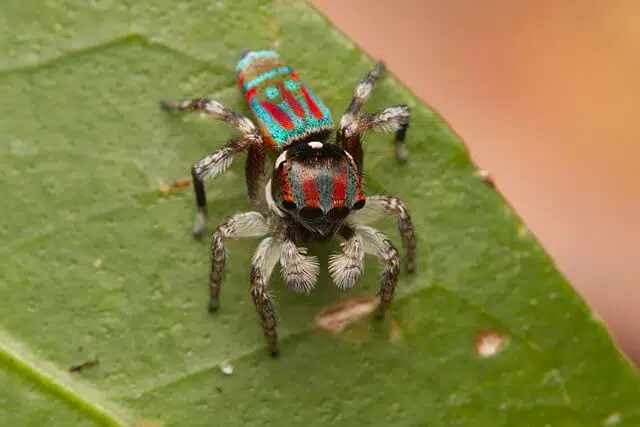
Peacock spiders (Maratus volans) are non-poisonous spiders that have bright rainbow-colored bodies.
They have excellent jumping abilities, enabling them to ambush prey and escape predators. They do not build webs to capture prey, using their jumping to ambush insects and other spiders.
With excellent vision, they can locate prey, hunting during the day. Being able to see a rainbow spectrum and ultraviolet light, they are good hunters and not picky eaters, eating other spiders, sometimes much large than themselves.
On some occasions, the females do tend to eat the males, with the male being smaller than the female.
13. Pirate Spiders
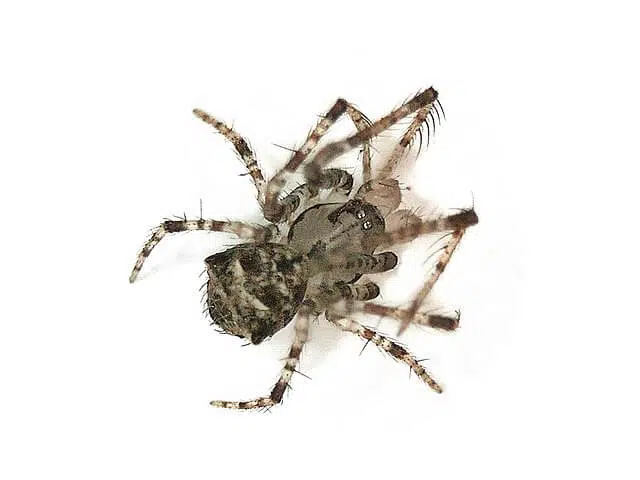
Pirate spiders (family Mimetidae) are the true pirates in the spider world with acts of thievery on prey’s webs. These spiders can be found in Central and South America in tropical areas.
Their main diet is other spiders.
They are yellow to brown with spines on their front legs.
They are members of the orb-weaver family but do not make their webs. They tend to invade other spider webs.
They feed on the other spiders, enclosing their prey between their front legs. The pirate spiders have a venomous bite that is poisonous to the other spiders, killing them quickly. They mimic the vibrations of insects in the other spider’s web to trick them.
14. Brilliant Jumping Spider
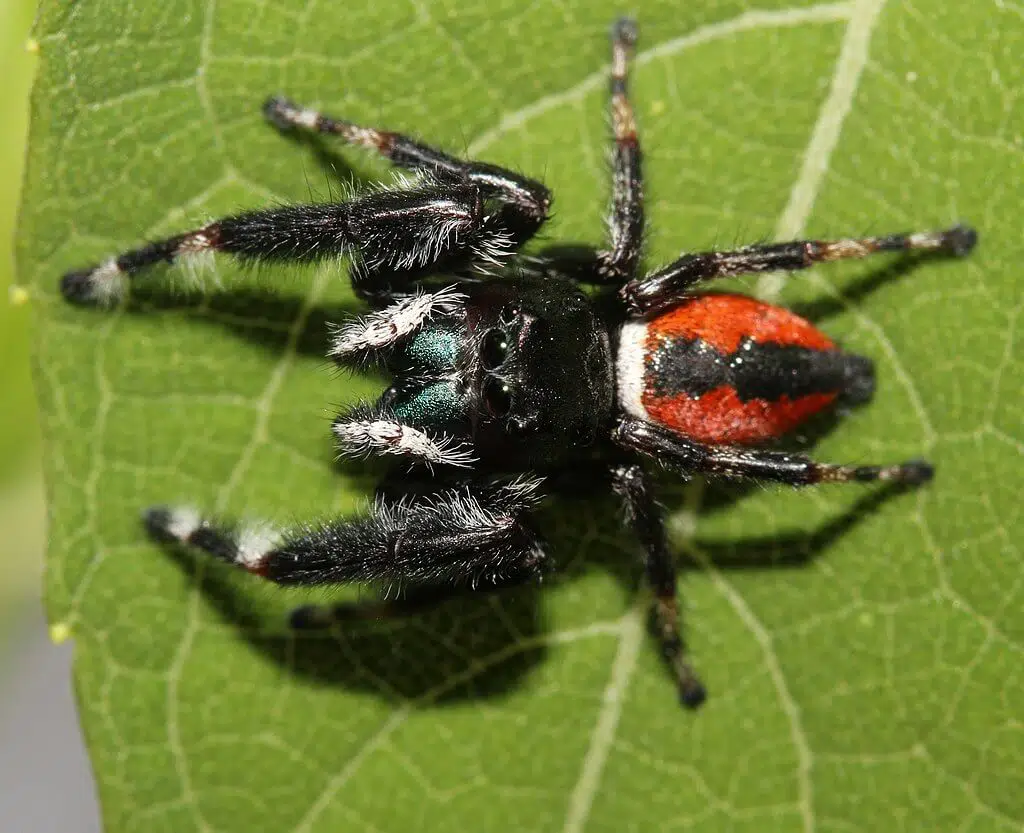
Brilliant jumping spiders (Phidippus clarus) are excellent at ambushing and tend to prey on insects and other spiders.
They have brilliant eyesight, which enables them to sight prey, stalking them and ambushing them with their fast, rapid-fire, jumping abilities.
While the spider jumps at the prey, which can include another spider, they throw a line of silk, which reduces the risk of the prey escaping. They bite the other insect or spider and then settles in one pot and don’t move until all the undigested prey has gone.
15. Ground Spiders
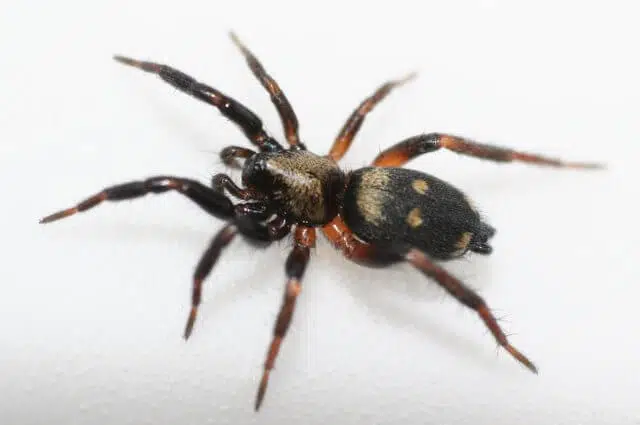
Ground spiders (family Gnaphosidae) are active hunters that chase and subdue their prey.
They can hunt large and dangerous prey, including other spiders. They subdue their prey quickly using their silk. They produce thick and sticky silk to entangle their prey by applying the webbing to their prey’s mouth and legs immobilizing it quickly.
They often live in groups with other spiders of the same species. Ground spiders will eat any spider, no matter the size or whether it is venomous or not, when hunting.
16. Triangulate Cobweb Spider
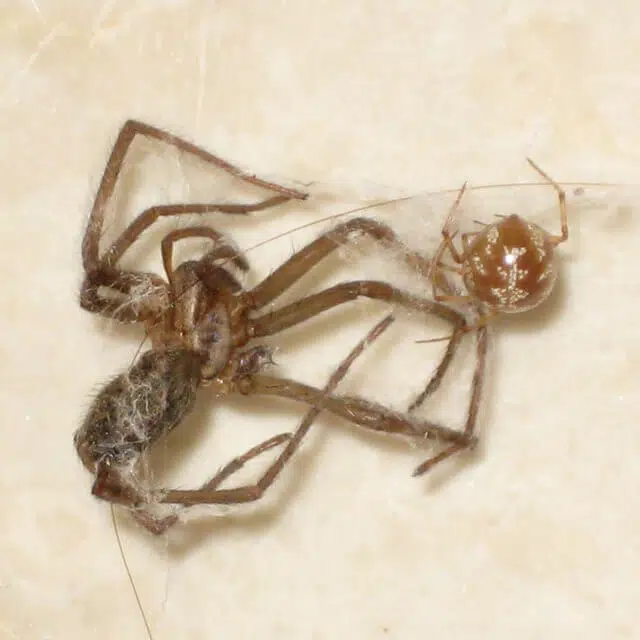
Triangulate cobweb spiders (Steatoda triangulosa) are known to prey on insects and other spiders. They prey on some harmful spiders, such as the brown recluse and hobo spider.
They have exceptionally bad eyesight and therefore they spin a web that is a tangled mess of sticky silk, which is used to entrap their prey. They rely on the vibrations in their web to identify the size and where the prey is located.
The triangulate cobweb spider can be found throughout the world from Europe to North America and New Zealand. They are common house visitors, creating their webs in dark corners.
Summary
It is interesting to note how many spiders are happy to eat another spider, even the most venomous black widow, and brown recluse. Most do it out of hunger, to protect their species, or for their young to learn valuable hunting skills to survive.
Further Readings: